LEWISTON — When evaluating downtown apartment buildings, Jeff Baril puts a lot of stock in rickety stairs.
Poor front steps, ramshackle porches and overgrown grass — basic care not taken — are harbingers of bad things for a building, he believes. So is a landlord’s bankruptcy. And a property owner’s death? Potentially, very bad.
“I’ll show you a building right now that’s going to become a problem,” said Baril, police liaison with the city’s Code Enforcement Department, as he pulled up to an old Knox Street apartment building next to a community garden. “This building right here, the red one, the guy who owns the building is deceased. So right now, who’s running the building?”
His answer: No one.
It’s headed, he worries, in the direction of the city’s problem buildings. Lewiston has a list of 102 distressed properties, most of them in the downtown. Sixty-three are so bad that they’ve been condemned.
It’s an issue that came to a head earlier this spring when a trio of fires ravaged the area within a week. All are being investigated as arson. All are believed to have started in buildings that were vacant or condemned.
The fires damaged or consumed 10 apartment buildings, leaving about 200 people homeless.
They have drawn attention to the plight — and blight — of the downtown. But this isn’t the first time there have been calls to do something about the ramshackle, tightly packed housing stock that fills street after street. And it’s not the first time tragedy has prompted such calls for action.
In 1997, the city’s Code Enforcement Department promised to step up enforcement after a fire at a Maple Street tenement with a long history of fire and building code violations killed a father and two children. A Sun Journal story in 2000, three years later, showed that housing inspections instead decreased.
The city now has more code enforcement officers than it did years ago. The City Council has spent the past year ordering the demolition of condemned buildings, and it plans to keep going. City officials also want to do more.
Since the fires six weeks ago, officials have encouraged landlords to get rid of tons of trash and debris, both fire hazard and unsightly mess. They’ve swept through 20 vacant apartment buildings, ensuring no squatters have taken up residence and the buildings have been secured. City leaders say they want to help landlords evict problem tenants and help renters hold problem landlords accountable. They envision a different downtown: a prettier, more pleasant, less-fire-prone place to live.
But will this time be different? Will the changes and promises stick?
Some say yes — even Baril, who looks at overgrown lawns and sees the future.
“I’m optimistic that things are going to get better,” he said. “I think we had to go through a not-so-good period, which we’re in, but we’re getting to the top of the hill here.”
‘They were just absolutely amazing’
Most of the downtown’s tenements were built in the late 1800s and early 1900s. For decades, the multi-story, multi-family buildings were home to mill workers and their families. They were generally well-cared-for, often by owners who also lived there.
“I can remember going to Little Canada, River Street, for example, going into a particular apartment building and the hallways were immaculate. They shined,” said Gil Arsenault, Lewiston’s Planning and Code Enforcement director who grew up in the area. “You could eat off the floors. Literally, you could eat off the floors. They were just absolutely amazing.”
That started to change in the late 1970s and early 1980s. Building owners took advantage of a booming real estate market and began to sell. The new owners tended to view the properties as investments, not homes, so they lived elsewhere and managed them from afar.
“The new owner wasn’t maintaining the building, just wasn’t being attentive, would put an undesirable tenant in the building,” Arsenault said. “In a matter of a year, the building went from being a great building with great little memeres and peperes who were in occupancy for 30 or more years to something very different.”
Changes in the economy, financial pressures and the closure of the mills didn’t help. By the early 1990s, much of the downtown housing stock had fallen into dangerous disrepair.
A 1991 Lewiston Housing Taskforce study made 14 recommendations for improving the inner city, including consistently and effectively enforcing all city codes and ordinances, prioritizing code enforcement, making regular block sweeps to reduce trash, abandoned vehicles and other violations and working with insurance companies to provide incentives for maintaining safe buildings.
Some recommendations were implemented. Others were not.
In 1997, the fatal 56 Maple St. fire refocused attention on the downtown. The fire, from an ashtray emptied into a bag of trash on the second floor, swept up through the old wooden building in minutes, killing Scott Morrill, his 1-year-old daughter, Brittany, and his 3-year-old stepson, Joshua Hotham. The building had a long history of code violations and, after the fire, officials discovered more problems, including blocked fire exits and a lack of working smoke detectors.
Code enforcement vowed to step up. And in 1999, Lewiston’s Downtown Master Plan named its primary goal: the destruction of the area’s worst tenements. Its long-term goal: a pilot project to encourage more owner-occupied housing and to create parking lots and green space downtown.
But despite the promises and goals, little changed — and what did change wasn’t for the better.
In 2000, a Sun Journal report headlined “Rot, rats and ruin” found housing inspections actually declined after the 1997 fire. The city had only one housing inspector position and it was vacant. Record-keeping was lax when it existed at all. And when the department did inspect and find violations, it didn’t follow up, relying instead on tenants to call again if a problem wasn’t fixed.
And there were a lot of problems to fix. In one downtown building, a woman was hurt when she fell through the rotten wood of her first-story porch. In another, a 2-year-old boy had lead levels so high that they threatened his health and the state was called to intervene. In others, a teenager got hurt when she tripped on tilted, dilapidated steps and a man said he fled his apartment because cockroaches had infested the place and were creeping into tenants’ ears and mouths as they slept.
There was outcry again. City officials this time offered four recommendations: target federal money on a block-by-block basis, establish a housing subcommittee, maintain competitive wages to better attract code enforcement employees and expand staff resources.
By 2003, a follow-up story found some evidence of progress. The city did target federal money and did establish a housing subcommittee, checking off two of the four recommendations. And it filled its housing inspector position.
But problems persisted. While the city raised wages, turnover remained high. By 2003, four people had worked as housing inspector; three lasted no longer than eight months. Almost half of the inspections done in the previous two years were still marked “open,” meaning the buildings remained out of compliance. Record-keeping was still lax and, understaffed, code enforcement continued to rely on tenants to keep complaining about unresolved problems, rather than sending someone to re-inspect.
Downtown housing remained ugly and hazardous.
In recent years, more attempts have been made to fix the problem. The Visible Community formed in 2004 and in turn created the Neighborhood Housing League, a group dedicated to helping residents advocate for safe and affordable downtown housing. At the league’s urging, the city used a federal grant to pay Baril to serve as a police liaison with the Code Enforcement Department, essentially giving the department another housing inspector, but one with the powers of a law enforcement officer.
In March 2012, the City Council began holding regular hearings on condemned buildings. If code enforcement officials proved that a building was a danger and its owners couldn’t convince councilors that they could and would repair it, councilors ordered the building’s demolition. If the owner wouldn’t knock it down by deadline, the city would, and it would bill the owner for the cost.
The city has long had such power, and had exercised it over the years on old mills and buildings that had to come down for economic development, but it had never focused so much attention on dilapidated residential buildings. Last year, the council ordered the demolition of 13 of them.
“It’s just been a reluctance on the part of previous councils to go that route,” said Norm Beauparlant, Lewiston’s budget and purchasing director, who has tracked every city-ordered demolition for the past three decades. “This is the biggest spike, the largest group of buildings we’ve done at one time.”
But it wouldn’t be large enough or fast enough. On April 29, the fires started.
Working for change
The first fire swept through three apartment buildings on Blake, Bates and Pine streets. The second, on May 3, damaged or destroyed four apartment buildings on Bartlett and Pierce streets. The third, on May 6, hit three apartment buildings on Bartlett and Horton streets.
No one was killed, but so many fires in a week alarmed residents and city officials. One major fire was shocking enough, three was horrifying.
Immediately after the third fire, city leaders announced a temporary punch-pass program to encourage landlords and downtown tenants to get rid of mountains of trash. (And they did, throwing away nearly 100 tons of it.) In the days that followed, police, fire and city code officials swept through 20 vacant apartment buildings, made sure no squatters were there and boarded up doors and windows to keep people out.
In the weeks since, city officials, community leaders and residents have debated the problem of downtown housing.
Some, including property owners, blamed renters for the problems. They say tenants wreak havoc on buildings, destroy property and then don’t pay rent, leaving beleaguered landlords with no cash to fix up the units. And eviction comes with its own costs.
“You’re not making any money in the downtown,” said Rick Breton, owner of Double Eagle Properties, which has 75 units across the state, including some in Lewiston. “I see why all these buildings are empty. Nobody stands up for the landlords.”
Some, including advocates for the poor, say bad landlords are the bigger cause of the downtown’s strife. They say those owners refuse to fix problems that were there long before today’s tenants moved in, leaving buildings unsafe, unheated, infested with bugs and generally falling apart. Complaints aren’t embraced.
“Then the landlord, out of retaliation, evicts the tenants,” said Melissa Dunn, residential coordinator for the Neighborhood Housing League.
Others say the responsibility rests with both tenants and landlords, and that the two sides need to work together with the city and code enforcement.
But that’s not so easy, either. The Fire Department, which is one of the departments that inspects buildings for safety concerns, has dropped from about 1,800 inspections a year to about 1,000 because the city hasn’t had the money to keep up staffing levels.
Code enforcement has more people doing inspections now than it did years ago, but it continues to struggle with record-keeping, in part, Arsenault said, because of problems with “nightmarish” housing inspection software purchased in 2009. And although the department will re-inspect a building for code violations, it still relies on tenants to complain again. If they don’t call back, the department figures the problem has been resolved.
City leaders and advocates are coming up with a variety of ways to deal with downtown housing.
Mayor Robert Macdonald, who campaigned on a promise to clean up the downtown, hopes next week to convene a meeting of landlords and Pine Tree Legal Assistance, which typically helps low-income renters battle landlords and fight eviction.
After talking with Pine Tree Legal, Macdonald said he’s come to the conclusion that landlords sometimes don’t know what they’re doing when they handle legal evictions on their own, inadvertently costing themselves time and money. He hopes teaching landlords about the legal process will help them kick out problem tenants and will help good renters by getting the riffraff out of town.
“Hopefully, at the end of this meeting everybody is going to be on the same page, so we’ll have that problem done,” Macdonald said.
He has also proposed a disorderly property ordinance that would fine landlords whose tenants are the subject of repeated police calls. The goal: Get landlords to take responsibility for renters and provide documentation that could help them evict unruly tenants.
“I am not talking about the working poor and I am definitely not talking about the refugees,” he said. “I’m talking about the little ticks that come in here to attach themselves to our welfare program and that’s all they come up here for.”
Craig Saddlemire, Ward 5 city councilor, a volunteer with the Visible Community and a downtown resident, would like to see a change he believes would help both landlords and tenants: Alter the policy that makes landlords pay $170 per unit per year for trash removal. The service is free for many owner-occupied homes, but few downtown apartment buildings are owner-occupied anymore — which means landlords either have to pay to have the trash hauled away or rely on tenants to find a way to deal with the garbage. A change in the policy has been discussed by the city’s Downtown Neighborhood Action Committee, but it has not been considered by the City Council.
When it’s the property, not the people or policy, at issue, Baril has his own tactics. For homes dipping into the danger zone — such as the Knox Street apartment building whose owner died — he encourages tenants to get out now, before the situation gets bad. It’s not an eviction and sometimes tenants don’t listen, but he hopes people will leave before it gets to the point that the heat runs out or the water is turned off.
“I was there the other day trying to get some tenants to move out, you know, just because there’s no one running the building,” Baril said. “If there’s no real violation of the building, it’s not my job to throw them out, but I always recommend.”
For properties already so bad that they’ve been condemned, the city plans to continue ordering them razed. Six demolition orders are in place and another three are up for consideration.
What makes this focus on the downtown any different than the focus in 1991, 1997, 2000 and 2003?
Beauparlant and others point to new downtown housing built in recent years on Maple and Ash streets and in the Bates Mill, as well as recent projects by Community Concepts and the building of the B-Street Community Center. It’s new construction — and enthusiasm for the area — barely dreamed of in the dreary downtown of 1991.
“It’s taken a while to get there, but now we’re starting to see activity,” said Beauparlant, who grew up in Lewiston and has worked for the city for decades. “It’s exciting to me to see our council very active and very aggressive in cleaning up the area.”
It’s that hard line, people say, that makes this time different. Residents and officials said they wanted change before, but they’re determined to make it happen now.
“One thing that you’re seeing now that you probably didn’t see before is the aggressiveness,” McDonald said. “That’s because I’m a very aggressive person. So this is what we’re doing right now. We’re going to clean this mess up. Whoever takes my place, and from there on in, is never going to have to worry about this again.”
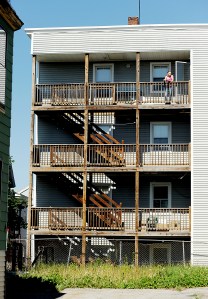
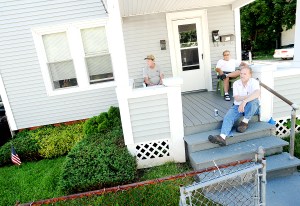

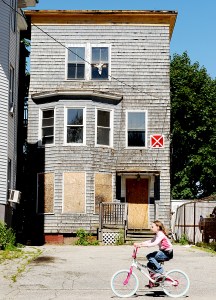
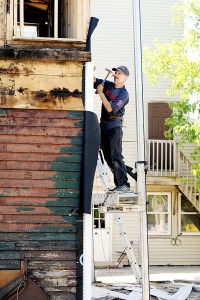
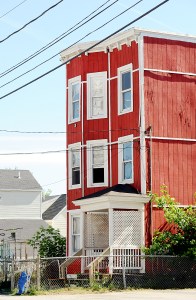
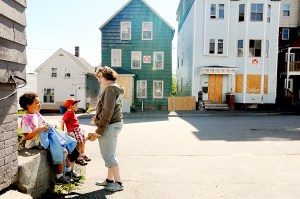
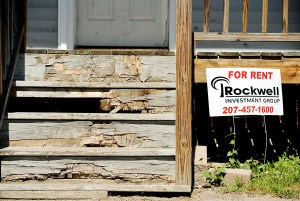
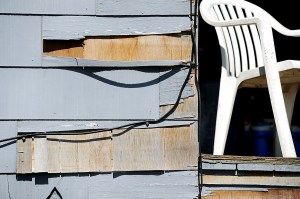


Comments are no longer available on this story